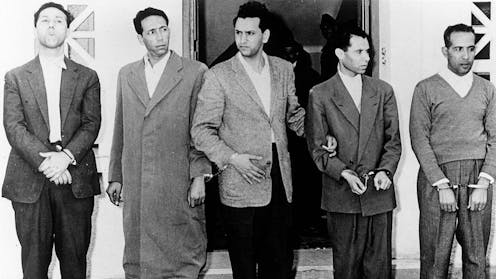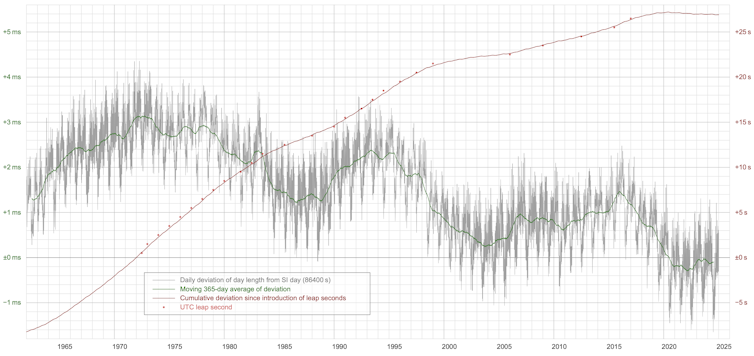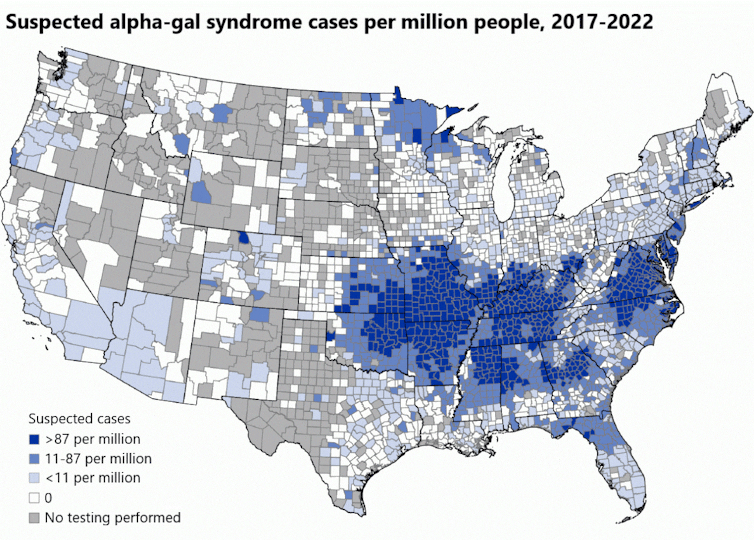Source: The Conversation – France in French (2) – By David Brutin, Enseignant-chercheur, Aix-Marseille Université (AMU)
Dans les enquêtes criminelles, chaque détail compte. Une trace de sang, l’angle d’un impact, la position d’un corps : tous ces éléments peuvent changer la compréhension d’une scène de crime. Pourtant, malgré les avancées technologiques en matière de criminalistique, les enquêteurs, les magistrats ou les jurés restent encore trop souvent confrontés à des difficultés majeures (difficile représentation d’une scène 3D pour les jurés, scène de crime originelle altérée, impossibilité de reconstitution) lorsqu’il s’agit de reconstituer des faits sanglants, par nature complexes.
C’est ce constat qui a conduit à la naissance du projet iCRIME, que je porte, un programme de recherche pluridisciplinaire financé par l’Agence nationale de la recherche (ANR), visant à transformer notre manière d’aborder les scènes de crime sanglantes grâce aux outils de la simulation numérique et de la réalité virtuelle.
Dans le cadre d’une enquête judiciaire, la scène de crime joue un rôle fondamental. C’est là que débute la construction du récit des événements. Mais cette scène, par nature éphémère, est rapidement figée, nettoyée, voire détruite. La fixation de la scène, quand cela est considéré comme nécessaire par le magistrat, est réalisée par la prise de photographies éventuellement complétées par un nuage de points dans l’espace captés par une technologie de télédétection qui utilise un laser.
Lors des procès, les magistrats doivent alors se baser sur des plans en deux dimensions, des photos ou des témoignages, souvent incomplets, pour comprendre ce qui s’est passé. Ce manque de lisibilité nuit parfois à l’analyse objective des faits, en particulier dans les affaires complexes où plusieurs versions s’opposent.
De plus, les reconstitutions judiciaires sont coûteuses, difficiles à organiser et peuvent être biaisées par l’environnement dans lequel elles se déroulent (lieux différents, conditions lumineuses éloignées de la réalité, impossibilité de reproduire des gestes avec précision, etc.). Ces limites sont connues de longue date par les acteurs de la justice.
Mais comment faire évoluer les pratiques tout en garantissant la rigueur scientifique et le respect du droit ? C’est à cette question qu’a voulu répondre iCRIME.
Pouvoir évoluer virtuellement dans une scène de crime
Notre projet est né d’une collaboration entre chercheurs, magistrats et acteurs des forces de sécurité intérieure. L’objectif est simple : mettre au service de la justice des outils immersifs et interactifs permettant de mieux comprendre les scènes de crime et les dynamiques d’événements.
iCRIME repose sur le traitement automatisé de quantités de données massives issues de l’archivage des scènes de crimes puis de leur restitution en réalité virtuelle. La simulation physique et dynamique des scènes de crimes est également ajoutée à iCRIME, c’est-à-dire la modélisation des comportements des corps, des projectiles, des fluides et des interactions entre objets dans un espace 3D réaliste.
D’ores et déjà, iCRIME propose de s’immerger dans un environnement virtuel en présence d’un avatar qu’il est possible de poignarder. La trajectoire des gouttes de sang résultantes est visualisée en direct et les impacts de gouttes de sang sur le sol ou sur les murs sont fidèles aux équations de la mécanique des fluides. Notre outil permet également d’effectuer le calcul inverse du point d’origine sur la base de taches de sang permettant ainsi de confronter différentes hypothèses sur la position de l’avatar.
Rassembler tous les acteurs de l’enquête dans une même scène
À terme, iCRIME proposera une immersion en réalité virtuelle dans des scènes de crime ensanglantées fidèlement modélisées. Grâce à un casque de réalité virtuelle, les utilisateurs peuvent déjà se déplacer librement dans un environnement numérique qui reproduit les lieux à l’identique. Cette immersion permettra une exploration intuitive, une meilleure appropriation de l’espace et une interaction directe avec les éléments de preuve. iCRIME ne se contentera pas de montrer une scène figée : il permettra d’analyser les hypothèses, de comparer plusieurs versions des faits et d’en débattre dans un espace partagé, que l’on soit enquêteur, expert, avocat ou magistrat. iCRIME permettra de « faire parler » la scène de crime.
Notre apport majeur réside dans notre capacité à simuler numériquement les événements via des modèles physiques élaborés par des chercheurs. Qu’il s’agisse d’un mouvement de corps ou de la dispersion de gouttelettes de sang, iCRIME repose sur des modèles physiques issus de la recherche expérimentale. Ces modèles validés, par des protocoles expérimentaux, permettront de confronter les différentes versions des faits par une analyse objective. Concrètement, cela signifie que l’on peut déjà reproduire une projection de sang depuis un point donné, analyser la trajectoire de la goutte, sa vitesse, son interaction avec des obstacles ou des surfaces.
Quand iCRIME sera certifié, il sera ainsi possible de vérifier si une version des faits est compatible avec les traces observées.
Améliorer la transparence et la contradiction
Cette approche ne se substitue pas à l’enquête, mais elle enrichit l’analyse en objectivant certaines hypothèses. La robustesse scientifique est au cœur du projet. Chaque simulation peut être paramétrée, rejouée, comparée, et surtout, elle laisse une trace : on peut documenter ce qui a été testé, selon quelles hypothèses, et avec quels résultats. C’est un outil au service de la transparence et de la contradiction, deux piliers du procès équitable.
iCRIME est certes encore en cours de développement, mais plusieurs usages sont d’ores et déjà envisagés. Par exemple, son utilisation dans ce que l’on appelle les « Cold Case » pour immerger un témoin, un suspect ou un mis en cause dans une scène de crime ancienne qui existerait toujours et qui serait reconstituée fidèlement en réalité virtuelle. iCRIME permettra ainsi de plonger une personne dans l’environnement pour lui faire évoquer des souvenirs ou des ressentis. Des images ou des sons pourront être joués pour favoriser la remontée de souvenirs afin d’aider à faire avancer une ancienne enquête. Les magistrats et les professionnels du droit voient clairement dans ces outils un levier pour renforcer la compréhension des affaires complexes.
Mais l’introduction de ces technologies dans la justice ne va pas sans débats : quel statut juridique accorder à une simulation même ouverte au contradictoire ? Comment éviter l’effet de persuasion que peut produire une scène immersive ? Quelle formation pour les magistrats, les avocats et les jurés ?
Autant de questions auxquelles notre projet tente de répondre. Son ambition n’est pas de trancher à la place du juge, mais de donner des clés de lecture plus fiables et rigoureuses. En cela, iCRIME s’inscrit dans une démarche de justice augmentée : une justice qui utilise les technologies non pour impressionner, mais pour éclairer.
David Brutin est le coordinateur d’un projet de recherche sur les technologies immersives au service des acteurs de la justice pénale, iCrime, soutenu par l’Agence nationale de la recherche ANR. Il a présenté ce projet au workshop interdisciplinaire pour la sécurité globale qui s’est déroulé les 26 et 27 mars 2025 à Paris-Saclay.
![]()
David Brutin a reçu des financements de l’ANR.
– ref. Le projet iCRIME : Recréer virtuellement une scène de crime pour aider les enquêteurs et les magistrats à établir la vérité – https://theconversation.com/le-projet-icrime-recreer-virtuellement-une-scene-de-crime-pour-aider-les-enqueteurs-et-les-magistrats-a-etablir-la-verite-256612













